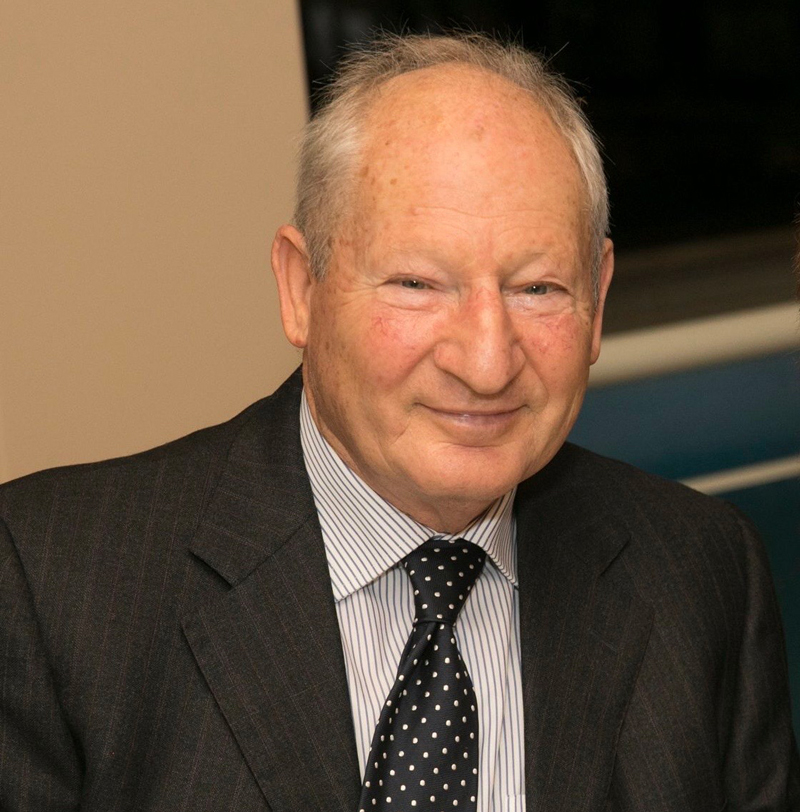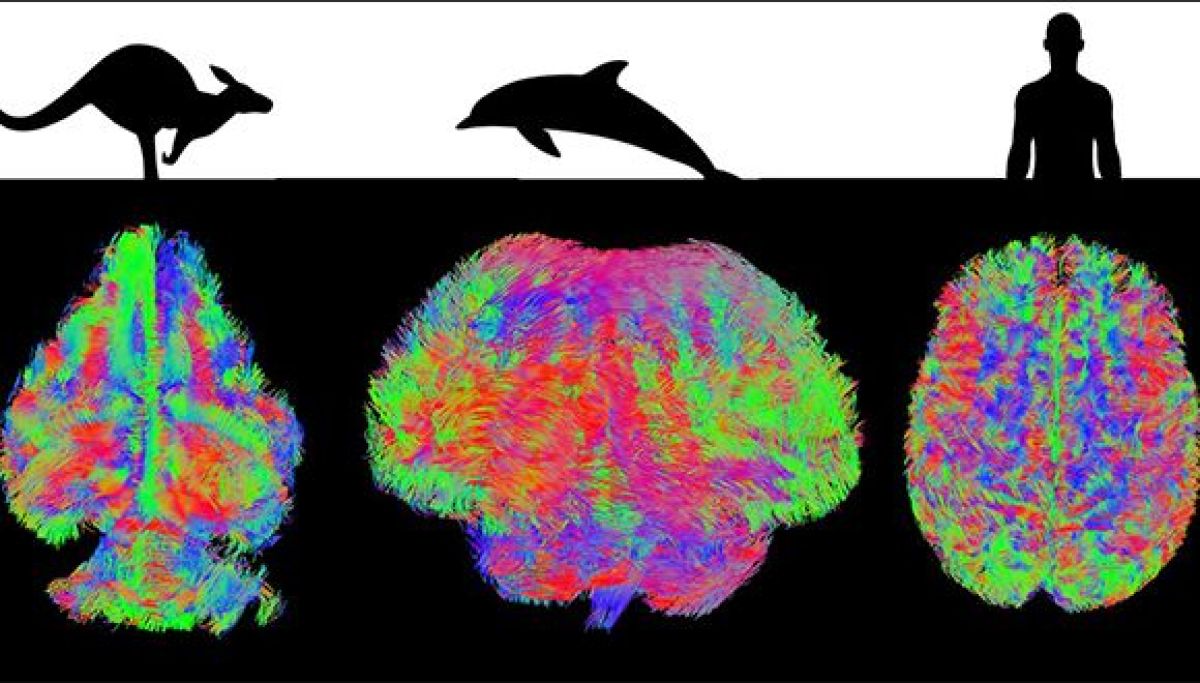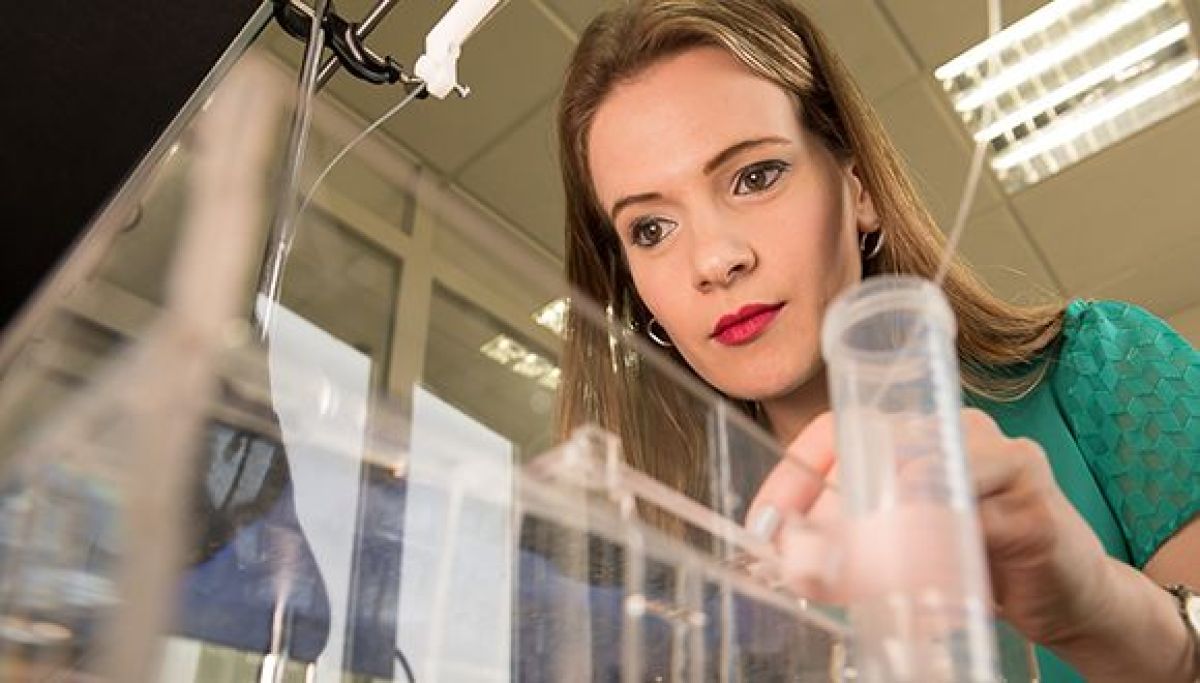Author: AUFTAU
The window of opportunity for preventing metastases
Immune System Stimulating Treatment to Reduce Psychological and Physiological Stress Prevents Metastases and Can Save Cancer Patients’ Lives
In a breakthrough research published recently in Nature magazine, Tel Aviv University researchers found that the short time period around the tumor removal surgery (the weeks before and after surgery), is critical for prevention of metastases development, which develop when the body is under stress.
According to the researchers, to prevent development of metastases after the surgery, patients need immunotherapeutic treatment along with treatment to reduce inflammation, and physical and psychological stress. The research was conducted by Prof. Shamgar Ben-Eliyahu from the School of Psychological Sciences and Sagol School of Neuroscience at Tel Aviv University and Prof. Oded Zmora from Assaf Harofe Medical Center.
Immunotherapeutic treatment is a medical treatment activating the immune system. One such treatment, for example, is injecting substances with similar receptors to those of viruses and bacteria into the patient’s body. The immune system recognizes them as a threat and activates itself, thus it can prevent a metastatic disease.
Prof. Ben-Eliyahu explains: Surgery for the removal of the primary tumor is a mainstay in cancer treatment, however the risk of developing metastases after surgery is estimated at 10% among breast cancer patients, at 20%-40% among colorectal cancer patients, and at 80% among pancreas cancer patients.
According to Prof. Ben-Eliyahu, when the body is under physiological or psychological stress, such as a surgery, groups of hormones called prostaglandin and catecholamine are being produced in large quantities. These hormones suppress the immune system cells’ activity, and thus indirectly increase the development of metastases. Additionally, these hormones help tumor cells left after the surgery to develop into life threatening metastases. Thus, exposure to those hormones cause tumor tissues to become more aggressive and metastatic.
“Medical and immunotherapeutic intervention to reduce psychological and physiological stress, and activate the immune system in the critical period before and after the surgery, can prevent development of metastases, which will be discovered months of years later,” stresses Prof. Ben-Eliyahu.
Prof. Ben-Eliyahu adds that anti-metastatic treatment today skips the critical period around the surgery, thus leaves the medical staff to face the consequences of treating progressive and resistant metastatic processes, which are much harder to stop. Prof. Ben-Eliyahu’s research contradicts the assumption, widespread in the medical community, according to which, just like in chemo and radiotherapy, it is not recommended to give cancer patients immunotherapeutic treatment in the month before and after the surgery.
Walter Kastelan

Walter Kastelan
It is with great sadness that we announce the passing of our dear friend and colleague
Walter Kastelan
Governor, board member and former Treasurer of AFTAU (Victoria ) Inc.
Admired, respected and a true gentleman
Walter will always be remembered for the contribution he made to our organisation
and for that we are truly grateful.
We extend our heartfelt condolences to his wife Veronica and his children.
He will be sadly missed.
President Rosie Potaznik, the Executive committee and staff at
Australian Friends of Tel Aviv University (Victoria) Inc.
TAU Researcher Fights Epidemics Both Viral and Virtual
Dan Yamin can detect any kind of contagious outbreak
Think viral, tweet viral
Before joining TAU, Yamin completed a post-doctoral fellowship at Yale University’s School of Public Health. While there, he was disturbed by the level of anti-Israel sentiment on American social networks and its ability to go viral. He immediately made the connection. No paragraph breakBased on the same patterns he studied in disease transmission, Yamin began creating a system that uses artificial intelligence to identify how certain groups use viral marketing tactics to spread anti-Semitic and anti-Israel messages. The system, known as Iron Dome for Social Media, aims to track and identify malicious content with potential to go viral in social media terms. Yamin explains that people who retweet posts casually are much like asymptomatic disease carriers. Many Twitter users will pass on information with covert or explicit anti-Semitic messages unintentionally. Choosing when to respond on social media is a delicate matter. Hence, Yamin suggests using AI, such as in his Iron Dome system, to assist with the decision-making process. “Being proactively pro-Israel on social media is not always the best approach,” says Dr. Yamin. “Most anti-Israel tweets are not viral, so why waste time on tweets that won’t go anywhere?”The next generation of disease control
As Israel and the world face the second wave of COVID-19, Yamin says, “for the time being, we need to live with this virus. If we act responsibly and maintain the daily routine for the vast majority of the population, we will not reach catastrophe”. Looking ahead, Yamin believes data-based methodologies like his are crucial in managing future viral diseases. As such, Yamin will be a key member of TAU’s multidisciplinary Center for Combating Pandemics, the first center of its kind in the world. “Data systems such as this one can substantially improve the accuracy of medical diagnosis in the future,” he says. Dr. Dan Yamin (Photo: Moshe Bedarshi)Global first at TAU: MRI scan of the brains of 130 species of mammals, including humans, indicates equal connectivity in all of them
The research reveales a universal Law: Conservation of Brain Connectivity
 Intelligent mammals
Intelligent mammals
Size doesn’t count
The project began with advanced diffusion MRI scans of the brains of about 130 mammals – each representing a different species (It must be noted that all brains were removed from dead animals, and no animals were put down for the purposes of this study). The brains, obtained from the Kimron Veterinary Institute, represented a very wide range of mammals – from tiny bats weighing 10 grams to dolphins whose weight can reach hundreds of kilograms. Since the brains of about 100 of these mammals had never been MRI-scanned before, the project generated a novel and globally unique database. The brains of 32 living humans were also scanned in the same way. The unique technology, which detects the white matter in the brain, enabled the researchers to reconstruct the neural network: the neurons and their axons (nerve fibers) through which information is transferred, and the synapses (junctions) where they meet. The next challenge was comparing the scans of different types of animals, whose brains vary greatly in size and/or structure. For this purpose the researchers employed tools from Network Theory, a branch of mathematics that allowed them to create and apply a uniform gage of brain conductivity: the number of synopses a message must cross to get from one location to another in the neural network. Prof. Assaf explains: “A mammal’s brain consists of two hemispheres connected to each other by a set of neural fibers (axons) that transfer information. For every brain we scanned we measured four connectivity gages: connectivity in each hemisphere (intrahemispheric connections), connectivity between the two hemispheres (interhemispheric) and overall connectivity. We discovered that overall brain connectivity remains the same for all mammals, large or small, including humans. In other words: information travels from one location to another through the same number of synopses. It must be clarified, however, that different brains use different strategies to preserve this equal measure of overall connectivity: some exhibit strong interhemispheric connectivity and weaker connectivity within the hemispheres, while others display the opposite.” Prof. Yovel describes another interesting discovery: “We found that variations in connectivity compensation characterize not only different species but also different individuals within the same species. In other words, the brains of some rats, bats or humans exhibit higher interhemispheric connectivity at the expense of connectivity within the hemispheres, and the other way around – compared to others of the same species. It would be fascinating to hypothesize how different types of brain connectivity may affect various cognitive functions or human capabilities such as sports, music or math. Such questions will be addressed in our future research.”A New universal law
Prof. Assaf concludes: “Our study revealed a universal Law: Conservation of Brain Connectivity. This Law denotes that the efficiency of information transfer in the brain’s neural network is equal in all mammals, including humans. We also discovered a compensation mechanism which balances the connectivity in every mammalian brain. This mechanism ensures that high connectivity in a specific area of the brain, possibly manifested through some special talent (e.g. sports or music) is always countered by relatively low connectivity in another part of the brain. In future projects we will investigate how the brain compensates for the enhanced connectivity associated with specific capabilities and learning processes.”TAU study: Oxygen therapy improves cognitive function in seniors
Research Published in Aging first to Show Enhanced Brain Function and Cognitive Capabilities Resulting from Novel Therapy
The Sagol Center for Hyperbaric Medicine and Research at Shamir Medical Center, together with Sackler School of Medicine and Sagol School of Neuroscience at Tel Aviv University announced that, for the first time, in humans, a peer-reviewed study has demonstrated that hyperbaric oxygen therapy (HBOT) can significantly enhance the cognitive performance of healthy older adults. The main areas of improvement were attention, information processing speed, executive function, in addition to the global cognitive function, all of which typically decline with age. Moreover, there was a significant correlation between the cognitive changes and improved cerebral blood flow in specific brain locations. The study was published on July 15th, 2020 in the peer reviewed journal Aging, entitled: Cognitive enhancement of healthy older adults using hyperbaric oxygen: a randomized controlled trial. Professor Shai Efrati, Head of the Sagol Center for Hyperbaric Medicine and Research, and Head of Research & Development at Shamir Medical Center, and an Associate Professor at Sackler School of Medicine and Sagol School of Neuroscience at Tel Aviv University, and Dr. Amir Hadanny, the Sagol Center for Hyperbaric Medicine and Research, designed the study based on a unique HBOT protocol developed at the Sagol Center over the past 10 years. The randomized controlled clinical trial included 63 healthy adults (>64) who underwent either HBOT (n=33) or a control period (n=30) for three months. The study’s primary endpoint included a change in general cognitive function measured by a standardized comprehensive battery of computerized cognitive assessments before and after the intervention or control. Cerebral blood flow (CBF) was evaluated by a novel magnetic resonance imaging technique for brain perfusion. “Age-related cognitive and functional decline has become a significant concern in the Western world. Major research efforts around the world are focused on improving the cognitive performance of the so-called ‘normal’ aging population,” said Prof. Efrati. “In our study, for the first time in humans, we have found an effective and safe medical intervention that can address this unwanted consequence of our age-related deterioration.” “Over years of research, we have developed an advanced understanding of HBOT’s ability to restore brain function. In the past, we have demonstrated HBOT’s potential to improve/treat brain injuries such as stroke, traumatic brain injury and anoxic brain injury (due to sustained lack of oxygen supply) by increasing brain blood flow and metabolism,” explained Dr. Amir Hadanny. “This landmark research could have a far-reaching impact on the way we view the aging process and the ability to treat its symptoms.” During HBOT, the patient breaths in pure oxygen in a pressurized chamber where the air pressure is increased to twice that of normal air. This process increases oxygen solubility in the blood that travels throughout the body. The added oxygen stimulates the release of growth factors and stem cells, which promote healing. HBOT has been applied worldwide mostly to treat chronic non-healing wounds. There is a growing body of evidence on the regenerative effects of HBOT. The researchers have demonstrated that the combined action of delivering high levels of oxygen (hyperoxia) and pressure (hyperbaric environment), leads to significant improvement in tissue oxygenation while targeting both oxygen and pressure sensitive genes, resulting in restored and enhanced tissue metabolism. Moreover, these targeted genes induce stem cell proliferation, reduce inflammation and induce generation of new blood vessels and tissue repair mechanisms. “The occlusion of small blood vessels, similar to the occlusions which may develop in the pipes of an ‘aging’ home, is a dominant element in the human aging process. This led us to speculate that HBOT may affect brain performance of the aging population,” Prof. Efrati explained. “We found that HBOT induced a significant increase in brain blood flow, which correlated with cognitive improvement, confirming our theory. One can conjecture that similar beneficial effect of HBOT can be induced in other organs of the aging body. These will be investigated in our upcoming research.” The research group leader, Professor Shai Efrati, who serves as director of The Sagol Center for Hyperbaric Medicine and Research, and is an Associate Professor at Sackler School of Medicine and Sagol School of Neuroscience at Tel Aviv University, also disclosed his role with Aviv Scientific LTD, which has developed a comprehensive program that includes HBOT treatment, cognitive and physical training and nutritional coaching, to enhance brain and body performance of aging adults based on the Sagol HBOT protocol at Aviv Clinics. Prof. Efrati serves as Chair of Aviv Scientific’s Medical Advisory BoardUnprecedented: A Senior Saudi Researcher Contributed an Article to an Israeli Academic Journal
A Historic Moment for Tel Aviv University’s “Kesher” Academic Journal
The latest issue of “Kesher”, an academic journal published by the Shalom Rosenfeld Institute for Research of Jewish Media and Communication at Tel Aviv University, opens with a unique paper, which is unprecedented in an academic journal.
In his first article in Hebrew, Prof. Mohammed Ibrahim Alghbban, head of NELC and Hebrew Studies at the Department of Modern Languages and Translation, at King Saud University in Riyadh, claims that the prophet Muhammad had good relations with Jews and only clashed with them on political grounds, not on religious ones. The article is called “Contribution to Prophet Muhammad’s Image Improvement in the Eyes of the Israeli Public: Muhammad’s Alliances and Mail Exchanges with Jews from the Arabian Peninsula.” The paper was published among increasing calls in Saudi Arabia and the Arab League to use inter-religious understanding for cooperation with Jews and Israel to achieve peace.
The editor of the academic journal “Kesher”, Prof. Gideon Kouts, met Prof. Alghbban at academic Hebrew Studies conferences as well as on his visit to Riyadh in 2015.
According to Prof. Alghbban, he decided to write the article in Hebrew in order to improve the image of the Prophet Muhammad in the eyes of the Israeli public. “Erroneous assumptions about the origins of Islam, proposed by Oriental Studies researchers in the previous century – some of which were written in Hebrew – led to a distorted understanding of manuscripts, wrong methodology, and negative influences on Hebrew speaking Middle Eastern Studies researchers,” writes Prof. Alghbban in the introduction to his article. “Accusing Islam and the Prophet Muhammad of hate speech and racism against Jewish tribes in Hejaz is erroneous. Muhammad treated equally all social groups in Al Madinah and in other places under his control, regardless of race and religion. The misrepresentations in the research are due to the fact that his letters were never translated into Hebrew,” to right this wrong Prof. Alghbban translated them in his article.
King Saud University offers an undergraduate Hebrew Studies program. Prof. Alghbban, head of NELC and Hebrew Studies at the university, incorporates contemporary Israeli literature in the curriculum. The program is taught only to male students, and in its course program one can find works by Israeli writers such as Yosef Haim Brenner, Shmuel Yosef Agnon, and Etgar Keret. Prof. Alghbban says that the Jewish public’s misunderstanding of Prophet Muhammad’s thoughts is rooted in faulty or biased translations into Hebrew, or even lack thereof, of Prophet Muhammad’s letters to Jewish tribes from the Arabian Peninsula and the written alliances he had with them.
Prof. Raanan Rein, head of Shalom Rosenfeld Institute, stresses that this article is mainly important for the unprecedented choice of a Saudi researcher to publish his article in an Israeli academic journal, in order to bring the two nations closer. “I hope that this academic cooperation is another step towards economic and political cooperation.
Bats navigate just like humans – using their excellent eyesight and a cognitive map
A new study investigates the navigation capabilities of bats from birth to maturity
TAU-led Team Destroys Cancer Cells with Ultrasound
Breakthrough method may be applicable to Parkinson’s, Alzheimer’s and more
An international research team, headed by Dr. Tali Ilovitsh from the Biomedical Engineering Department at Tel Aviv University, developed a noninvasive technology platform for gene delivery into cancer cells (breast cancer). The technique combines ultrasound together with tumor-targeted microbubbles. Once the ultrasound is activated, the microbubbles explode like smart and targeted warheads, creating holes in cancer cells’ membranes, and enabling the gene delivery. The two-year research was recently published in the prestigious journal Proceedings of the National Academy of Sciences (PNAS).
Dr. Ilovitsh developed this breakthrough technology during her post doctorate research at the lab of Prof. Katherine Ferrara at Stanford University. The technique utilizes low frequency ultrasound (250 kHz) to detonate microscopic tumor-targeted bubbles. In vivo, cell destruction reached 80% of tumor cells.
Dr. Ilovitsh explains: “Microbubbles are microscopic bubbles filled with gas, with a diameter as small as one tenth of a blood vessel. At certain frequencies and pressures, sound waves cause the microbubbles to act like balloons: they expand and contract periodically. This process increases the transfer of substances from the blood vessels into the surrounding tissue. We discovered that using lower frequencies than those applied previously, microbubbles can significantly expand, until they explode violently. We realized that this discovery could be used as a platform for cancer treatment and started to inject microbubbles into tumors directly.”
Dr. Ilovitsh and the rest of the team used tumor-targeted microbubbles, that were attached to tumor cells’ membranes at the moment of the explosion, and injected them directly into tumors in a mouse model. “About 80% of tumor cells were destroyed in the explosion, which was positive on its own,” says Dr. Ilovitsh. “The targeted treatment, which is safe and cost effective, was able to destroy most of the tumor. However, it is not enough. In order to prevent the remaining cancer cells to spread, we needed to destroy all of the tumor cells. That is why we injected an immunotherapy gene alongside the microbubbles, which acts as a Trojan horse, and signaled the immune system to attack the cancer cell.”
On its own, the gene cannot enter into the cancer cells. However, this gene aimed to enhance the immune system was co-injected together with the microbubbles. Membrane pores were formed in the remaining 20% of the cancer cells that survived the initial explosion, allowing the entry of the gene into the cells. This triggered an immune response that destroyed the cancer cell.
“The majority of cancer cells were destroyed by the explosion, and the remaining cells consumed the immunotherapy gene through the holes that were created in their membranes. The gene caused the cells to produce a substance that triggered the immune system to attack the cancer cell. In fact, our mice had tumors on both sides of their bodies. Despite the fact that we conducted the treatment only on one side, the immune system attacked the distant side as well.”
Potential treatment for brain diseases such as Parkinson’s and Alzheimer’s
Dr. Ilovitsh says that in the future she intends to attempt using this technology as a noninvasive treatment for brain related diseases such as brain tumors and other neurodegenerative conditions such as Alzheimer’s and Parkinson’s disease. “The Blood-Brain barrier does not allow for medications to penetrate through, but microbubbles can temporarily open the barrier, enabling the arrival of the treatment to the target area without the need for an invasive surgical intervention.”
Photo: Dr. Tali Ilovitsh










